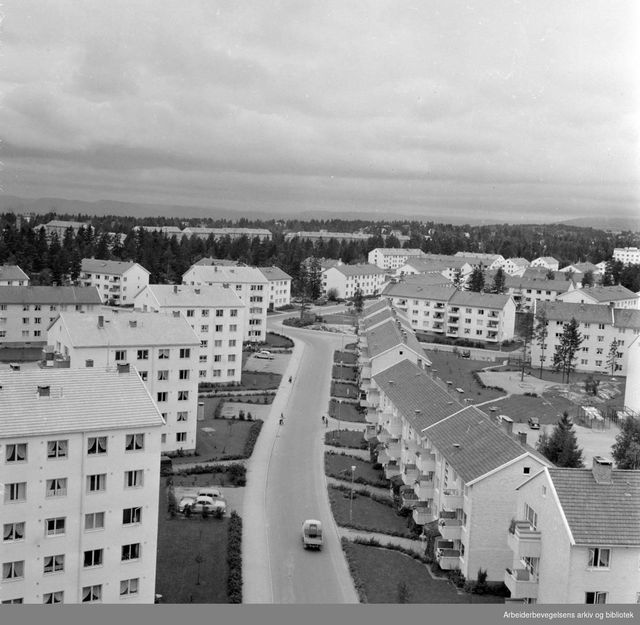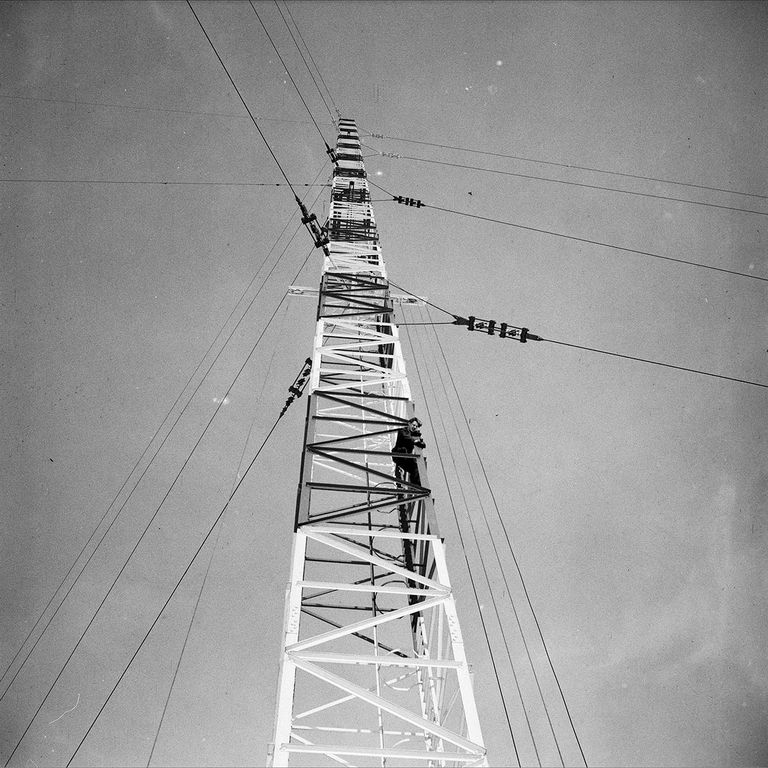In words and pictures: Lambertseter

Marmorberget was the first housing cooperative, and here the move-in began in July 1952. Lambertseter was also the name of an administrative district in Oslo municipality from 1988 to 2004. Today, Lambertseter belongs to the Nordstrand district.
Ideal location for broadcasting
When broadcasting arrived in Norway in the early 1920s, powerful transmitters were needed to receive the many stations across Europe. The telegraph authorities identified the Lambertseter plateau, with its 155 meters above sea level, as a suitable location for such transmitters.
The broadcasting station at Lambertseter was completed in 1929, designed in a functionalist style by Thorvald Astrup. The masts of the station were 150 meters tall and were the strongest transmitters in Northern Europe until 1954, when the Kløfta masts were finished.

Lambertseter Line
The Lambertseter Line opened in 1957. It was incorporated into the city's network of lines, and was operated by tram instead of the metro as it is today. The line was initially combined with the Kjelsås tram, but from 1960, Jernbanetorget became its terminal stop. In 1966, the Lambertseter Line was converted to a metro line. Previously, the line had functioned as a branch from the Østensjø Line at Høyenhall, but after the conversion to metro, the branch was relocated to be after Helsfyr.
In 1992, the Lambertseter line became the first line to be connected with a western line at Stortinget station. Gradually throughout the 90's, the other metro lines in Oslo were also connected. The stretch from Stortinget to Bergkrystallen is 10.5 kilometers long and has 15 stations, five of them in tunnels.

Images and videos on other websites
- See more pictures at digitaltmuseum.no
- Watch the movie "New suburban railways in Oslo, 1958" on youtube.com
- Watch the movie "Oslo's New Districts, 1958" on youtube.com
Sources
- Lambertseter on lokalhistoriewiki.org
- Lambertseter on snl.no
- Lambertseter Line on snl.no
- E. Opsahl and I. Sekne: From Farmers to Blocks (1993, 2nd edition 2023. Oslo: Søndre Aker Historical Society.)